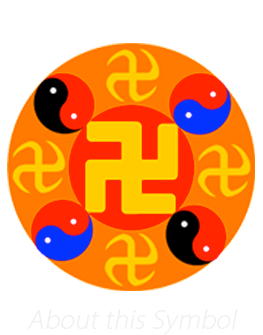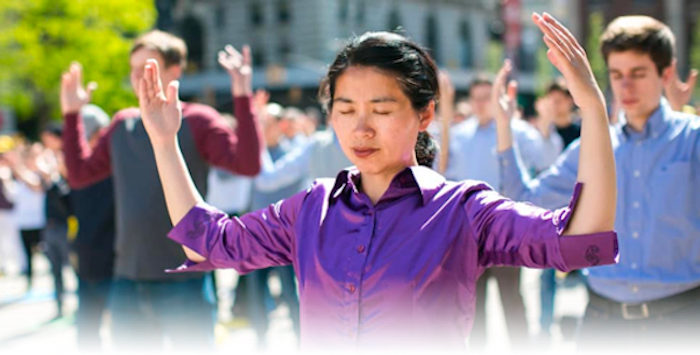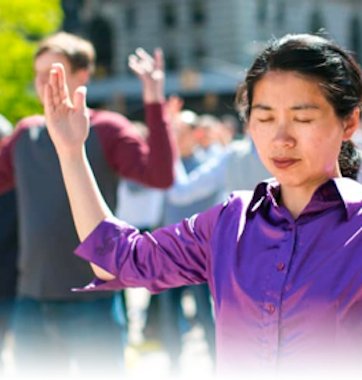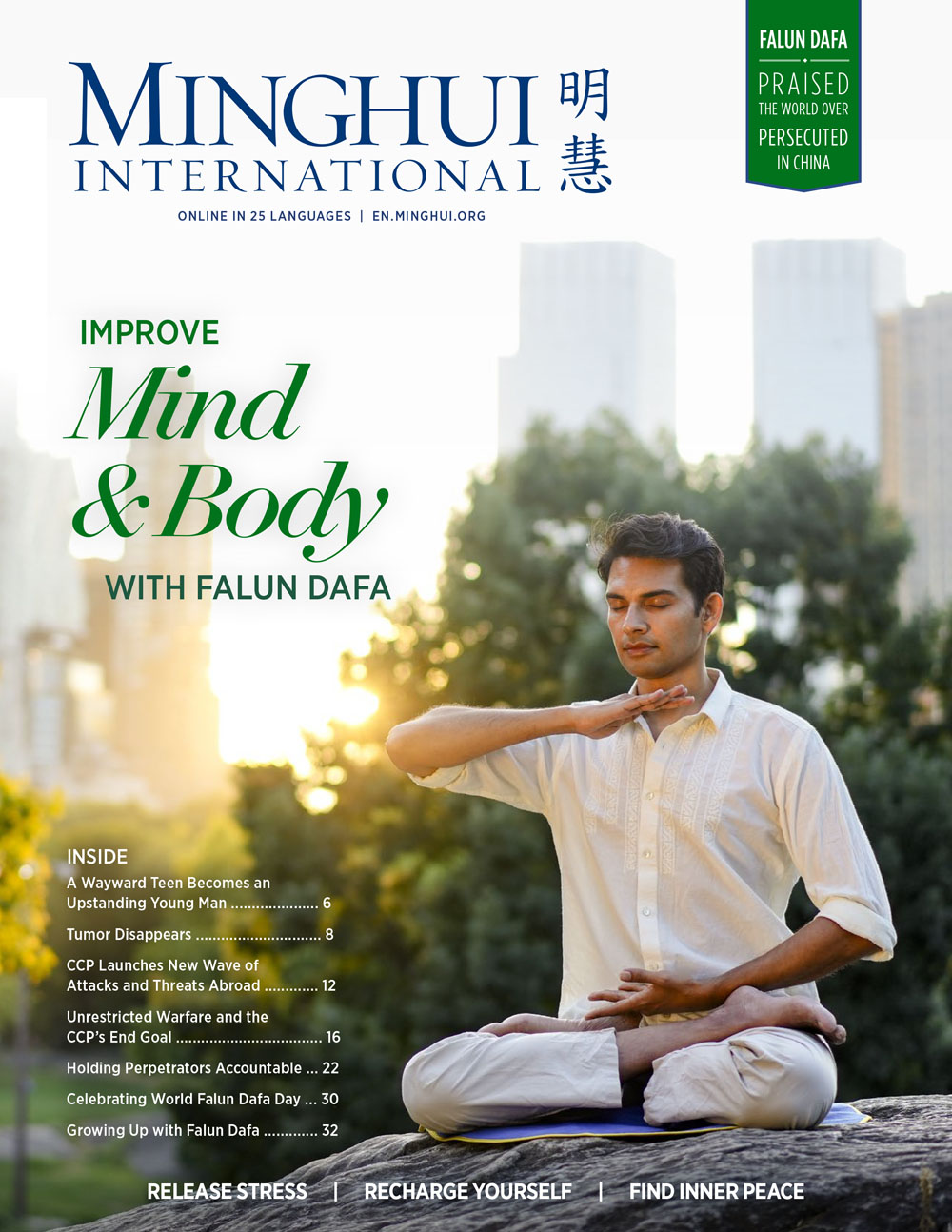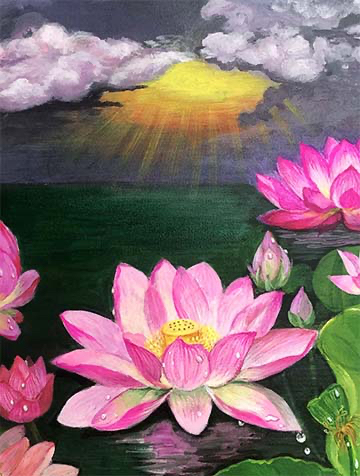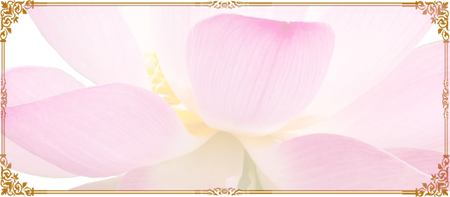(Minghui.org) The Chinese people’s desire and pursuit of exquisite finery has existed since the beginning of civilization in China. From the earliest emperors and dynasties to the present day, diverse historical backgrounds and cultures have shaped various styles of beauty in clothing.
The earliest chapter of the history of clothing began when a bone needle was found in the relics in Zhoukoudian, Beijing. This indicates that people have been using sewing techniques dating as far back as 18,000–11,000 B.C. Also found were pebbles and animal teeth with holes, suggesting people strung them together and hung them around the neck or waist for decoration.
During the Zhou Dynasty, traditional tops typically featured rectangular collars and straight sleeves, which could vary in width from narrow to wide. These garments were often secured with a broad waistband, and their length generally extended to the knees.
During the Warring States Period, clothing was crafted from bright and colorful fabrics. Garments featured a slender, elongated silhouette and broad collars that wrapped gracefully around the torso.
During the Han Dynasty officials typically wore crowns adorned with horizontal ridges (liang guan). Their clothes featured large sleeves with gathered cuffs, reflecting both status and elegance.
During the Tang Dynasty, clothing gradually became broader and longer. On regular days people often wore silk and brocade in bright colors. Women typically wore veiled hats when leaving the house. At the height of the Tang Dynasty, women frequently wore a collarless vest with two plackets buttoned at the center. These vests had elbow-length sleeves, and the length reached the waist, covering part of the skirt’s waistband, which rose to the chest. During the Tianbao Era, noblewomen dressed in loose garments with four-foot-long sleeves, and their gowns often trailed about 5 inches on the ground.
Women’s clothing in the Song Dynasty was typically long and narrow. During summer, lightweight clothing made by leno-woven fabrics helped them to stay cool. Their outer shirts featured laced collars adorned with embroidered flowers that extended from the neck to about shin level.
During the Republic of China period, women mostly wore Cheongsams (qipaos) while men dressed in long gowns or the Chinese tunic suit, commonly known as the Zhongshan suit.
After 1949, when the Chinese Communist Party (CCP) took control of Mainland China, clothing choices became more uniform and less individualized. Both men and women commonly wore similar shirts and pants. During the Cultural Revolution, green military-style suits became a fashion trend for both men and women.
During the summer of 2025, young women on the streets of China have little clothing on them—many wear halter tank tops with ripped jeans, or extremely short shorts with tube tops. Some young men wear tight-fitting tops and pants, often accessorized with a large earring. Women want to wear less and men want to look different.
In just a few decades people’s wardrobes have become unconventional. Are these so-called “clothes with personality,” actually attractive?
Many people believe that items from the past are old-fashioned and unscientific, modern society’s creations are viewed as scientific and advanced. I disagree with this perspective. If we take a closer look, we’ll see that clothing from various Chinese dynasties not only provided warmth and coverage, but also reflected the nations’ culture and sense of beauty. Generals wore majestic battle robes, while intellectuals and poets preferred fluttering long sleeves that made them appear elegant and refined. Tang Dynasty ladies’ garments were luxurious and visually pleasing, whereas Song Dynasty women’s dresses were fresh and elegant. Even the flowers on men’s hairpins contributed to a handsome and distinguished appearance.
Today, revealing clothing and unconventional styles have become popular trends. Traditional ideals of femininity and masculinity are less often embraced. Women no longer want to look gentle, feminine and virtuous, and men do not take masculine gentlemen as their role models.
After the CCP seized power in 1949, it subtly but systemically reshaped the way people think. During the Cultural Revolution, women threw away their Cheongsams and wore overalls because they were encouraged to appear dirty and unkempt to prove they were just as good as men. Feminine beauties once seen on billboards were replaced by women with more masculine features. Being clean and tidy was labeled as “favoring capitalism,” while appearing poor and unkempt working class became the new ideal.
To this day most male artists portrayed in the media share a similar appearance: tall, skinny with pale skin and an effeminate look. Meanwhile, clothing once labeled as revealing and promiscuous for women is now praised as a symbol of freedom and confidence.
There is a common misconception in society that people should automatically accept what the majority considers good and correct. Consequently, anything new must be fashionable and we are expected to follow prevailing trends. However, the ancient story of Zhang Guolao riding his donkey backward implies otherwise. As a Daoist practitioner, Zhang observed that in a degenerated society, what is being considered progress is indeed the opposite. In today’s society, moral values have declined to a dangerously low level.
I remain hopeful because I know that everything goes through a cycle of formation-stasis-degeneration-destruction. The style of clothes will eventually return to tradition and real beauty.
Copyright © 1999-2025 Minghui.org. All rights reserved.
Category: Traditional Culture
